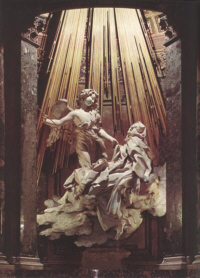Usually you wouldn't expect to find me in the audience for a lecture entitled Economic Factors, Your Retirement, and Fidelity's Mutual Funds. Sounds deadly, doesn't it? But on Monday evening, there I sat at the RA Centre waiting for the speaker to begin. Ladies in smart business jackets at the door were handing out adverts for Mutual Funds and a free ball point pen to each arriving attendee, saying "Enjoy!" A gentleman on the front row beside Chris and me didn't think his pen was a very good return for the investments he'd made so far with the TK group. The audience of about 100 people were not all pending retirees by any means, the youngest person present being a very small and pretty baby who'd come along with her parents.
The speaker was Peter Drake, a man who has never retired, because he tried it for half a year once, and he (and his wife) got fed up with it. An economist with the TD bank and a lecturer at the University of Toronto, he's been in the Canadian finance industry for the last 35 years.
To my relief, his lecture was much easier to listen to than I'd expected. He believes that "we're gonna get out of the mess", that the media are being wildly over-dramatic, giving confusing and scary messages without stepping back to see the big picture. Mr Drake, who is going to be in the CBC box on Budget Day, says that you can't make risk go away, but that bankers have become totally risk-averse lately. The central banks of the UK and Canada are the present day heroes, as are the US Federal Reserve, who, learning on the fly, have dropped their interest rates. Are we going back to the 1930s in N. America or the Japanese 1990s? He thinks not. The governments of the '30s were "too tight", didn't stimulate the economy as ours are planning to do and the Japanese were scared; fear of hyper-inflation was "burnt into their souls", an attitude that cost them a decade of growth. The Global Economy we have now means we trade far more now than in the past; this is good news, but means we have to learn how to deal with international issues as well as our own.
There's a shortage of workers in Canada already that's going to get worse, so the aging population shouldn't fear unemployment; we're going to have the opportunity to carry on working! So says a man who obviously loves his work. Nor should we talk of a "housing crisis". It's a "house price correction", that's all. He predicts that the fall in house prices will stop about half way through 2009, an important step towards better times. As regards the ups and downs of the price of oil, market momentum is a powerful force. If prices go up, we cut back, and we'll soon be better at conserving oil.
We're in a period of de-flation, the opposite of in-flation. Typically we wait before buying things at such times. Two years ahead we'll feel like buying again and the currency will start to inflate.
Yields from bond funds have dropped noticeably, but that's just part of a trend; they've been falling for years. In the past bonds have yielded a 19% return. That was an anomaly that won't happen again for some while.
A retired couple in Canada spends $48,450 per year, on average (which seems a suspiciously precise number and a surprisingly low amount to me—just over £13,000 each, in British terms). Of course, "essential expenses" and "discretionary expenses" are debatable.
Statistics, according to Peter Drake:
A female of my age has a 50% chance of living to the age of 86.
At least one person per couple has a 50% chance of living to the age of 90.
25% of us will live till we're 94.
50% of us will live in nursing homes at one time or another.
Once retired, to keep up with inflation, medical costs and so on, we should aim at a 4% withdrawal rate from our savings.
There are only two basic options for governments faced with financial trouble:
Recent governments have followed the ideas put forward by J M Keynes, but they "didn't read the second chapter." As regards the USA, Clinton got the US out of deficit, but the current administration (Bush & co.) knows nothing about fiscal policy! We shouldn't blame our own financial advisors for the stupid mistakes of credit rating agencies and regulators who screwed up and the investment bankers in the US who followed the herd. Peter Drake himself being a contributor to advisor.ca, and his lecture being organised by a group hoping to sell us their Mutual Funds, perhaps we should take that comment with a pinch of salt.
Someone in the audience asked Mr Drake what newspapers he recommended us to read and he plumped for the Financial Times as the most reliable. The pundits from The Economist don't know as much as they think they do, but aren't bad, and nor is the Globe and Mail's Report on Business. He didn't think much of the Financial Post, however.
Perennial words of wisdom: "Don't put all your eggs in one basket." and "If an investment opportunity seems too good to be true, it probably is." Anyway, we're not to worry. Peter Drake expects to see regrowth in the economy by the third or fourth quarter of this year.
Could be a bit late for the latest victims of Nortel's shenanigans.
















